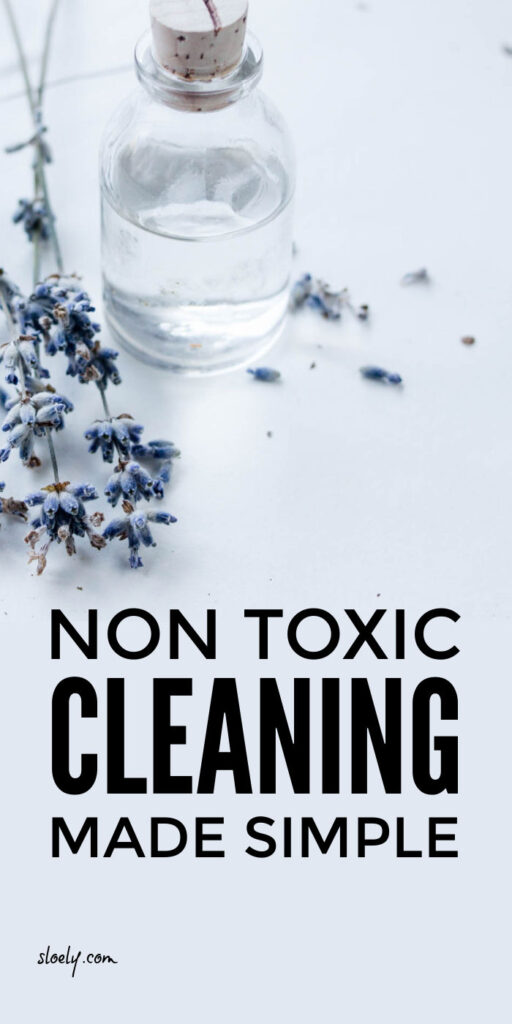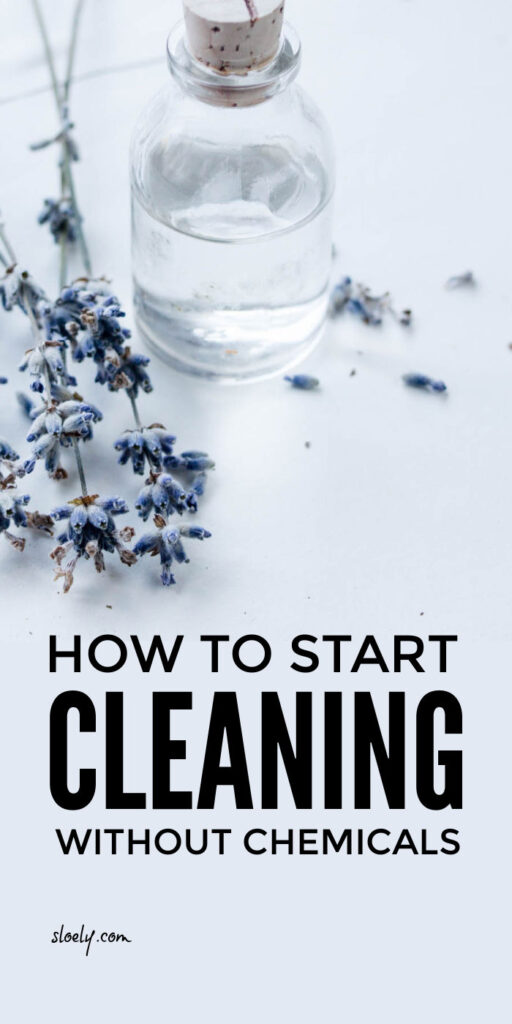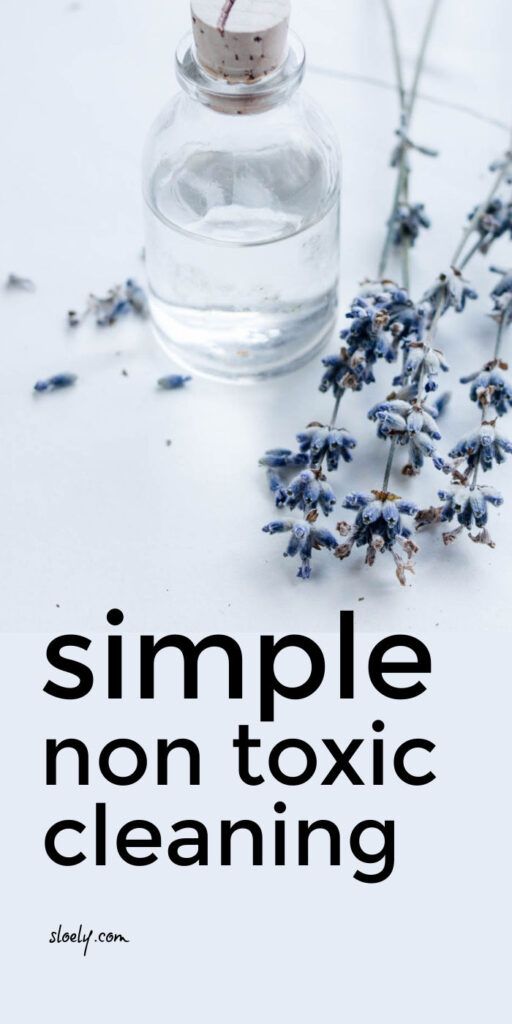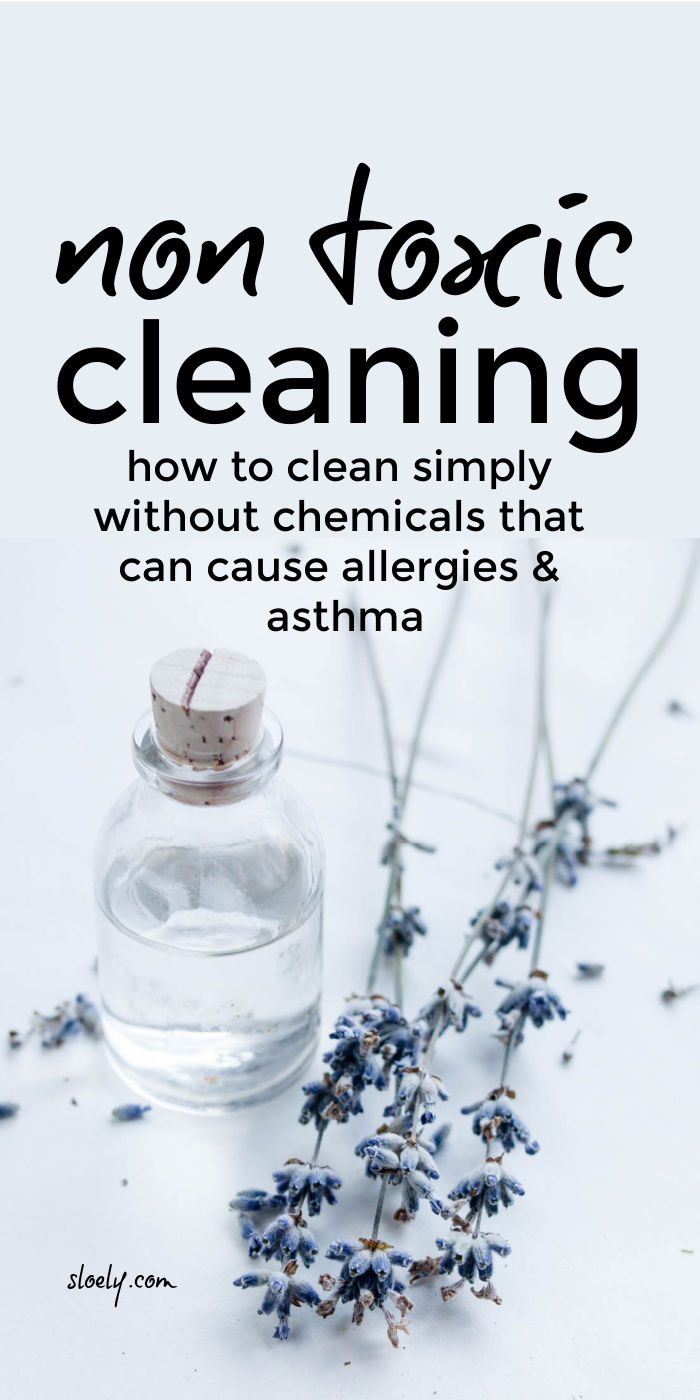
Lots of us on are on the hunt for good non-toxic cleaning products as we worry about the impact of so many harsh, bleach based cleaning products on both the environment and our family's health.
But non-toxic cleaning can get incredibly complicated and incredibly expensive.
Lots of people disagree about which non-toxic cleaning products are actually the safest. And some which are supposedly super safe are stupidly pricey. Can anyone really afford to pay that much to clean their loo!!
The good news however, is there are actually some super simple and super cheap non toxic cleaning products out there and I've got an easy guide for you on how to find them here.
I've split the guide into two sections for you:
- Essential non-toxic cleaning products
- And how to check for toxic chemicals in your cleaning products.
The guide will help you quickly find the toxic cleaning products you really don't want in your home as they can cause allergies, respiratory problems and much more for you and your family.
So do bookmark or save it for quick reference.
Essential Non Toxic Cleaning Products
We truly can do the vast majority of our cleaning with just these 8 essential cleaning products:
- Reusable cloth cleaning cloths
- Dish soap
- Dish washer tablets
- Laundry liquid
- Hand soap
- Vinegar
- Baking soda (bicarb)
- Hydrogen peroxide
An awful lot of cleaning jobs we chuck nasty chemicals at need nothing more than a cleaning cloth and hot water.
And these basic cleaning products can be combined easily in different ways to clean everything from the grubbiest oven to the hardest to shift set in blood stains on your laundry.
For tougher cleaning jobs you can find out how to combine these products in my guide here to natural cleaning recipes.
Buying just a few generic cleaning products costs us much less overall and that makes it easier to spend a bit more on choosing non-toxic products when we're buying dish soap, dishwasher tablets and laundry liquid.
I personally buy these from Bio-D (affiliate link) who make non-toxic, allergy friendly cleaning products less than 200 miles from my home.
In north America use these guides to find non-toxic brands to switch to :
Or if like me you're in the UK also check out two other brands I use: Ecoleaf and Ecodoo (also affiliate links).
How To Check For Toxic Chemicals in Your Cleaning Products
Use this guide to identify cleaning products under your kitchen sink and in your bathroom that could be causing health problems for your family and polluting the environment.
1. Anti-bacterial soap
We all worry about germs but it turns out these soaps are not the best.
Loads of the chemicals in them are now recognised as a risk to human health and the environment and may actually help bacteria to resist essential antibiotics plus there's no evidence they kill germs better than ordinary soap!!
2. Anti-bacterial sprays
Soap's not the only problem. Those anti-bac sprays we blast the kitchen and bathroom room with are also pretty nasty!
They contribute to antibiotics resistance and can:
- cause breathing problems
- poison aquatic life as they get into our rivers & seas!
And again are not needed. Germs can be removed with hot soapy water or with these natural disinfectants.
3. Sink cleaners
Oh my! Sinks can get grotty quickly can't they?
And it's tempting to reach for some serious chemical power to blitz them but many of the best selling sink cleaners contain Oxalic Acid which can cause kidney problems.
4. Drain cleaners
Drain cleaners often contain Sodium Hypochlorite which burns and is very toxic for aquatic life.
5. Oven cleaners
Oven cleaners often contain Ethanolamine which can cause severe respiratory damage if breathed in.
6. Stain removers
Ingredients vary lots making it tricky to buy safely as some big brands include Quaternium-15. This is a formaldehyde-releasing chemical which can cause severe allergic reactions. Many other stain removers include bleach.
Use these tips to brighten whites without bleach, remove blood stains without bleach and remove grass stains naturally.
7. Toilet cleaners
Sadly, any chemicals going down the loo get into our water system and the DCMEH found in big brands is super toxic for aquatic life.
In addition there are significant health risks from cleaning with bleach.
8. Dish washing liquid
Luckily dish liquids overall have got better recently but because we use them every day it makes sense to go for the least toxic we can find.
These are four US popular brands which all get the best A rating from the EWG. In the UK try Bio-D and EcoLeaf - which both manufacture in Britain.
9. Dishwasher Detergents
I know we want our dishes clean without too much scrubbing but big brand dishwasher tablets can contain Hydrozincite which can be super toxic in our rivers.
10. Rinse Aid
As can common ingredients in dishwasher rinse aids.
11. Laundry liquids
Those laundry liquids and powders we lather our kids clothes with are a minefield of nasties!
Some include Sodium Borate aka borax which is banned in the EU because of reproduction risks. Others include Formaldehyde which has cancer risks. And otther nasties include Sodium lauryl sulfate, 1,4-dioxane, nonylphenol ethoxylate & phosphates.
12. Fabric softener & dryer sheets
These both commonly include what are known as QUATS. They leave a soft film on our clothes but increasing evidence suggests these QUATS are associated with asthma.
13. Dusting & polishing sprays
These can include paraffins such as C12-20 ISOPARAFFIN which has cancer risks. I've discovered my most effective weapon against dust is actually decluttering.
With less clutter it's easy to whizz around with a duster and I can even usually bag a little helper without worrying what she's breathing in!
14. Window cleaning spray
Window cleaning sprays can include Ammonium Hydroxide which can cause respiratory damage.
Windows can be cleaned effectively with hot water and vinegard.
15. Bathroom sprays
Again, these are another minefield, with a bunch of chemicals associated with asthma risks. You can make a simple clean creamer from dish soap and baking soda. And your own cleaning spray from dish soap, water and vinegar.
16. De-scaler
Most products for descaling limescale in your kettle etc rely on citric acid to work. To make sure you're not getting anything else dodgy just use plain citric acid or lemon juice.
17. Insect spray
I know, I know, flies are a pest. Particularly in the summer.
But those fly sprays are associated with asthma and they don't just kill the pesky flies they kill bees and butterflies and ladybirds which is a big disaster for the environment.
There are simple effective alternatives for getting rid of flies naturally.
18. Ant powder
And if flies are a pest, ants are even worse aren't they?
But that ant powder under your sink is lethal for bees, aquatic life and cats and you do not want it anywhere near your kids!
Again there are simple natural ways to get rid of ants naturally.
And there you go. Everything you need to look for on cleaning products you have in your kitchen and bathroom to see whether they are toxic or not. If you stock up on the essential non toxic cleaning products, it is very simple to ditch the nasties quickly.
I do hope this guide to non toxic cleaning products helps. For more simple non toxic cleaning tips check out these posts:
- How to get rid of ants naturally
- How to get rid of flies naturally
- How to remove blood stains without bleach
- How to remove grass stains naturally

Original image sources: red bottle, lavender










Brandy says
I agree totally with your approach to cleaning. It is so easy to expose your family to very dangerous chemicals entirely on accident.
Naomi says
I love what you are doing lt is so true that people use too many dangerous and unnecessary chemicals in their homes. I also found your section on helping children who dont like school very helpfull.Thankyou for sharing this advice.